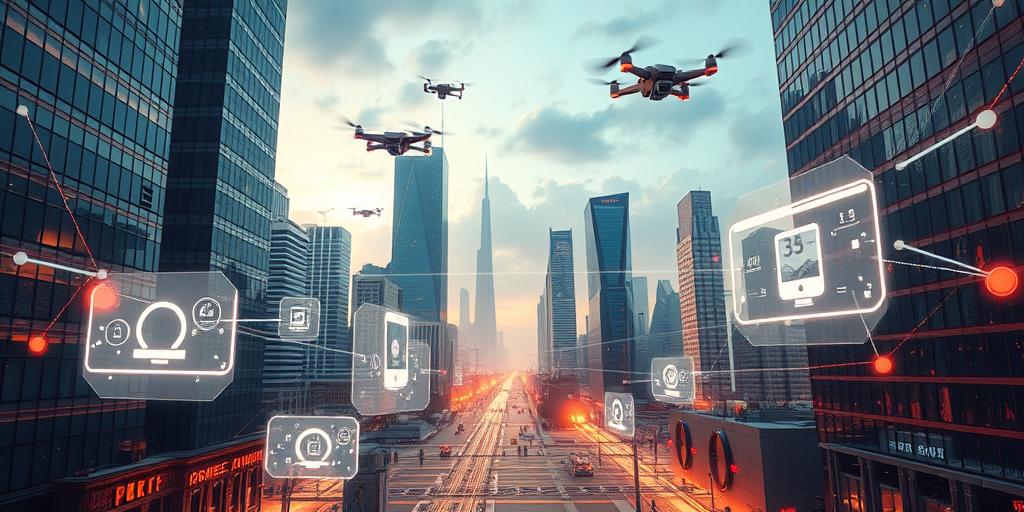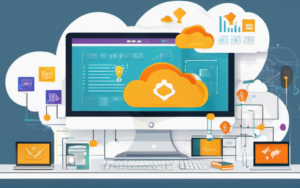The Internet of Things (IoT) is rapidly transforming the way we live, work, and interact with the world around us. But to truly unlock the full potential of IoT, we need a robust and scalable infrastructure – and that’s where Cloud IoT comes in. Cloud computing provides the foundation for managing and harnessing the vast amounts of data generated by connected devices, enabling businesses and individuals to gain valuable insights and automate processes like never before.
The Convergence of Cloud and IoT
The Power of Cloud Computing
Cloud computing has revolutionized the way businesses operate, offering on-demand access to computing resources like storage, processing power, and software applications. This flexibility and scalability have made it possible for organizations of all sizes to adopt new technologies and innovate at a rapid pace.
The Rise of the Internet of Things
The Internet of Things connects billions of devices, from smartphones and wearables to sensors and industrial equipment, creating a vast network of interconnected data streams. This connectivity opens up countless opportunities for data-driven insights, automation, and enhanced efficiency.
Synergy and Transformation
The convergence of cloud computing and IoT has created a powerful synergy, transforming the way we think about data collection, analysis, and utilization. Cloud platforms provide the necessary infrastructure to handle the massive data volumes generated by connected devices, while also enabling real-time data processing and analysis. This combination unlocks unprecedented possibilities for businesses, governments, and individuals alike.
Key Benefits of Cloud for IoT
Scalability and Flexibility
Cloud platforms offer unparalleled scalability, allowing you to easily adjust your computing resources based on demand. This flexibility is essential for IoT applications, which can experience significant fluctuations in data volume and processing requirements.
Data Storage and Analytics
Cloud storage solutions provide a secure and reliable way to store the vast amounts of data generated by IoT devices. These platforms also offer powerful data analytics tools that enable you to extract valuable insights from your data, identify trends, and make data-driven decisions.
Security and Reliability
Cloud providers invest heavily in security and reliability, offering robust measures to protect your data and ensure continuous operation. This is particularly important for IoT applications, where data breaches and system downtime can have significant consequences.
Cost Optimization
Cloud computing can help you optimize your costs by eliminating the need for expensive hardware investments and IT infrastructure. You only pay for the resources you use, making it a cost-effective solution for businesses of all sizes.
Cloud Services for IoT Applications
Cloud Platforms for IoT Development
Several cloud platforms offer dedicated services for IoT development, providing tools and resources for connecting devices, managing data, and developing applications. These platforms often include pre-built templates, APIs, and SDKs to simplify development and deployment.
Data Management and Analytics Services
Cloud providers offer a wide range of data management and analytics services, enabling you to store, process, and analyze data generated by IoT devices. These services can help you identify patterns, detect anomalies, and make data-driven decisions to improve efficiency and optimize operations.
Edge Computing and Fog Computing
Edge computing and fog computing bring computing resources closer to IoT devices, reducing latency and improving responsiveness. This approach is particularly beneficial for applications that require real-time data processing or have limited network connectivity.
Security and Access Control
Cloud security services provide robust measures to protect your IoT devices and data. These services include access control, encryption, and threat detection to ensure the security and privacy of your sensitive information.
Real-World Examples of Cloud-Enabled IoT
Smart Cities and Infrastructure
Cloud-enabled IoT solutions are transforming smart cities, improving traffic management, energy efficiency, and public safety. Connected sensors monitor traffic flow, air quality, and infrastructure conditions, providing real-time data for decision-making and optimization.
Industrial Automation and Manufacturing
Cloud-based IoT platforms are revolutionizing manufacturing processes, enabling remote monitoring, predictive maintenance, and automated production lines. Connected sensors and actuators collect data on equipment performance, enabling manufacturers to optimize production processes and reduce downtime.
Healthcare and Wellness
Cloud-enabled IoT solutions are transforming healthcare, enabling remote patient monitoring, personalized care plans, and improved diagnostics. Wearable devices and connected medical equipment collect health data, providing valuable insights for healthcare professionals and empowering patients to take control of their health.
Consumer Electronics and Smart Homes
Cloud-based IoT solutions are making our homes smarter and more convenient. Connected devices like smart thermostats, security systems, and appliances allow homeowners to control their homes remotely, optimize energy consumption, and improve security.
Challenges and Considerations
Data Privacy and Security
As IoT devices collect increasingly sensitive data, ensuring data privacy and security is crucial. Cloud providers must implement robust measures to protect data from unauthorized access and cyberattacks.
Network Connectivity and Bandwidth
IoT devices often rely on reliable network connectivity, and the increasing number of connected devices puts a strain on network infrastructure. Ensuring sufficient bandwidth and stable connections is essential for seamless operation.
Interoperability and Standardization
The lack of interoperability between different IoT platforms and devices can create challenges for integration and data sharing. Standardization efforts are underway to address these issues, but more work is needed to ensure seamless connectivity.
Cost and Complexity
Deploying and managing complex IoT systems can be costly and complex, requiring specialized expertise and resources. Businesses need to carefully evaluate the costs and benefits of cloud-based IoT solutions before making investments.
The Future of Cloud and IoT
Emerging Technologies and Trends
Emerging technologies like 5G, edge computing, and blockchain are transforming the landscape of Cloud IoT, enabling even more connected devices, faster data processing, and enhanced security.
The Rise of AI and Machine Learning
Artificial intelligence and machine learning are playing an increasingly important role in Cloud IoT, enabling advanced analytics, predictive maintenance, and automated decision-making.
The Potential for Disruption and Innovation
The convergence of cloud computing and IoT holds immense potential for disruption and innovation across industries. From smart cities and connected healthcare to autonomous vehicles and smart agriculture, the possibilities are endless.
A Connected and Intelligent Future
The future of Cloud IoT is bright, with the potential to create a more connected, intelligent, and sustainable world. As the number of connected devices continues to grow and technologies advance, we can expect to see even more transformative applications of Cloud IoT in the years to come.




